iFi attempts to reinvent the basic audio dongle.
- Included USB-a and Lightning adapters
- High-resolution and MQA format decoding
- Small and light
- Robust construction
- Clear, transparent sound
- Fixed, non-removable cable
- No physical controls
- 5+ times more expensive than an Apple dongle
- Not significantly better sounding than basic options
The iFi GO link is a simple dongle DAC/amp designed to fit into a niche between the inexpensive Apple dongle and higher-end portable devices. It addresses the issue of the missing headphone jack on modern phones, with an eye on sound quality, portability, and simplicity.
Although priced about 5 times higher than the ubiquitous Apple dongle, the GO link appears to be a very similar device featuring a fixed cable and a single 3.5mm headphone output. On the plus side, there are Lightning and USB-a adapters included for the attached USB-c plug.
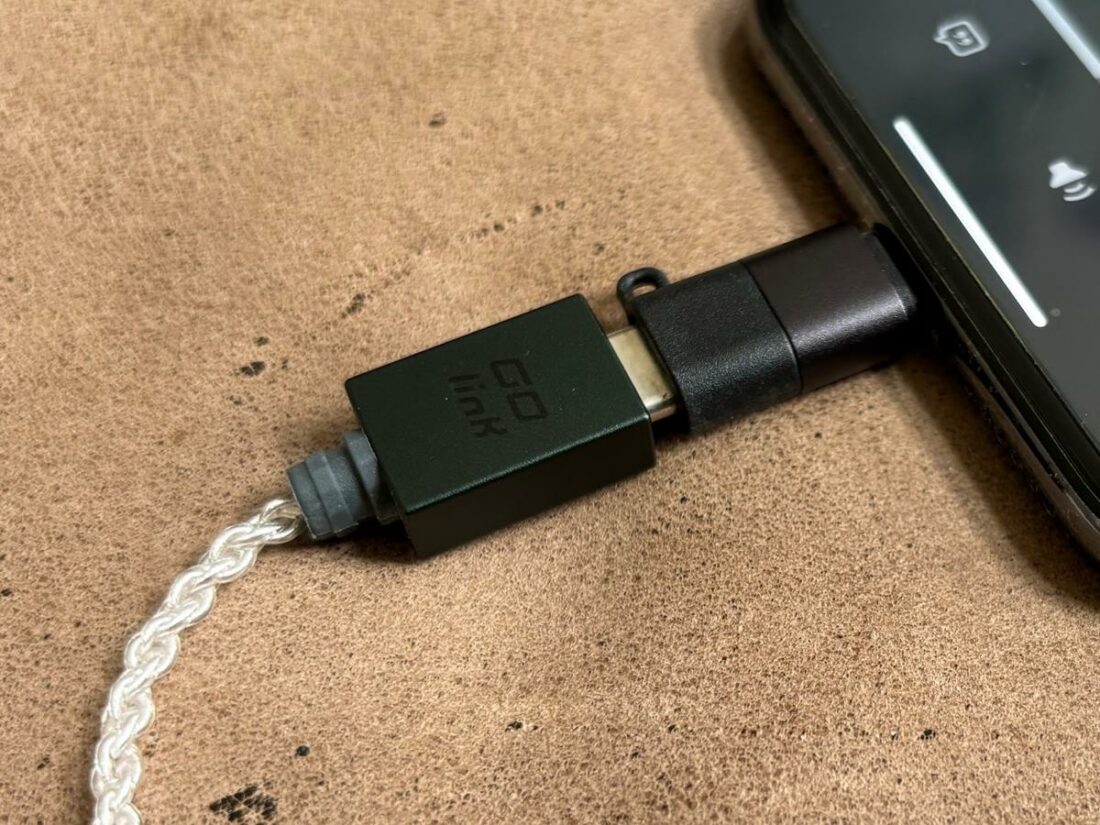
iFi promises “a big sonic upgrade” over the “audio tech contained within smart devices and computers” due to the 32-bit ESS ES9219MQ/Q DAC chipset, jitter eliminator technology, dedicated clock circuitry, s-balanced configuration, and adjustable analog gain with DRE (Dynamic Range Enhancement). The GO link supports 32-bit/384kHz, DSD256, and MQA decoding.
Portable audiophiles often have to choose between a variety of evils to balance convenience and sound quality. Bluetooth audio limitations, or a wired separate DAC/amp? Tiny, light, and easy to pocket, or a battery-powered, full-featured behemoth? Accept the compromises and save a few bucks, or chase the proverbial audiophile dragon with a melting credit card?
Let’s determine if the GO link fits well into its narrow slice of portable audiophilia.
Unboxing and First Impression
Design and Build
The most divisive design choice of the GO link is undoubtedly the 60mm, non-removable USB-c cable. On the plus side, it’s cheaper for iFi to produce and may reduce consumer costs, and it can’t be accidentally misplaced. Unfortunately, the cable feels somewhat fragile, and damaging the cable will render the device inoperable.

iFi claims that the twisted pair design of the silver-plated copper conductors helps to optimize inductance and capacitance and isn’t affected by electromagnetic interference from nearby electrical sources.
The subtly green-colored, rectangular, magnesium alloy body of the DAC (and USB plug) is about 4x the volume of the Apple dongle, meaning it’s still perfectly pocketable. However, the sharp corners are more likely to snag pockets than Apple’s cylindrical shape.
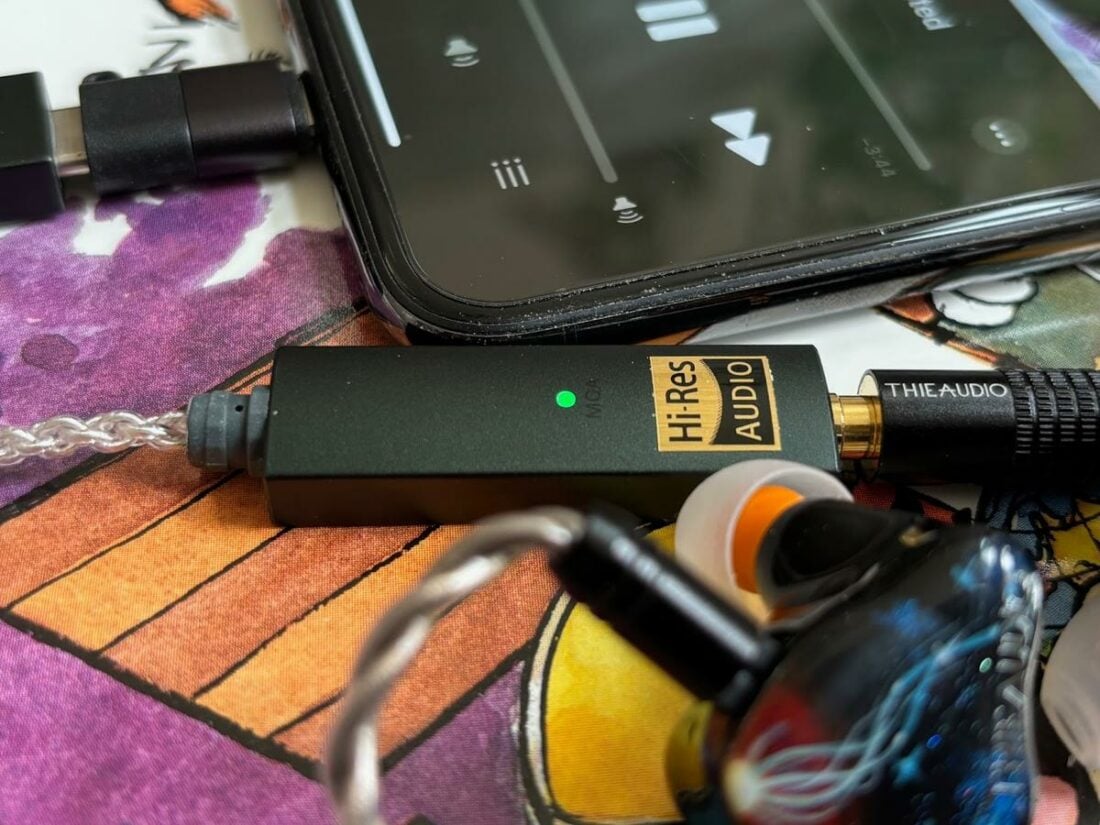
Controls
Like the Apple dongle, the GO link is simple, featuring no physical controls. There is a multi-colored format indicator LED, somewhat confusingly labeled MQA.
- Green – PCM 44.1/48/88.2/96 kHz
- Yellow – PCM 176.4/192/352.8/384 kHz
- Cyan – DSD 64/128
- Blue – DSD 256
- Magenta – MQA
Firmware
The GO Link is plug and play with iOS, MacOS, Android, and Windows. Just plug it in, and it works. You can download Windows drivers from iFi’s Download Hub for more granular volume control.
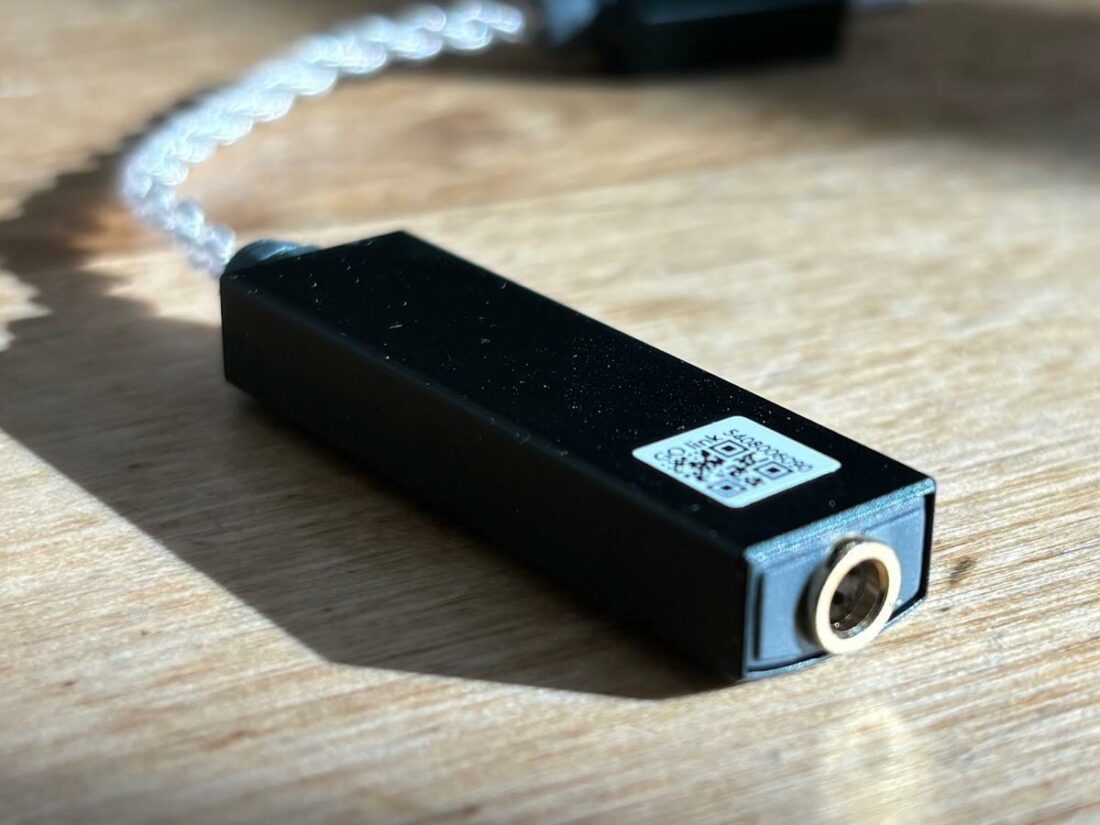
Currently, a firmware update tool (Windows only) and three firmware updates are available. I have read that there are discernable audio differences between the firmware (v1.66 treble boosted, v1.69 bass boosted, mids reduced, v1.80 mids boosted). All my testing was done with the most recent available firmware (v1.80), and I cannot speak to these claims of differences between firmware versions.
Battery
Using a FNIRSi FNB48 USB power meter, I measured the GO Link to draw approximately 0.075A from the host device, compared to the Apple dongle at 0.02A during use.
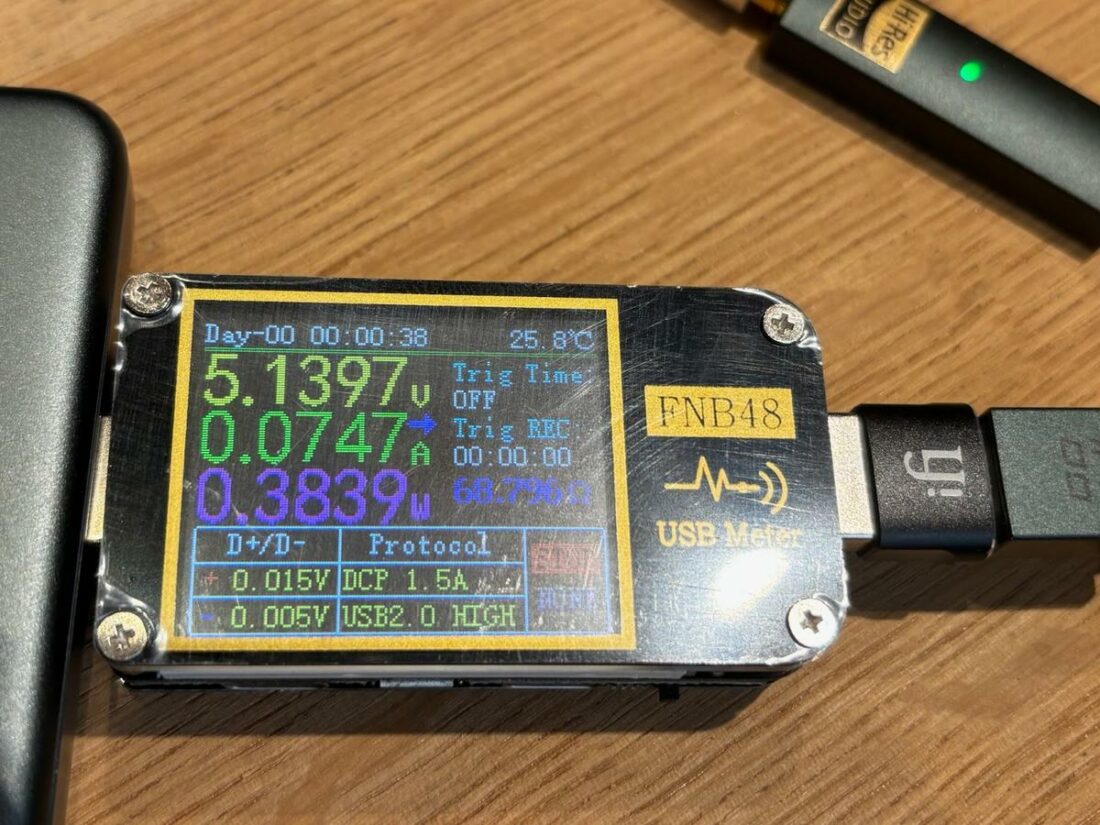
As a point of reference, a larger dongle DAC/amp, such as the Cayin RU6 uses between 0.11-0.35A.
The relatively small power draw of the iFi GO link will likely not have a huge impact with short-term use or when a charger is readily available, but it may be something to consider for long-flight usage, depending on the condition of the source battery.
Under the Hood
The 32-bit ESS ES9219MQ/Q DAC SoC chipset combines DAC and amp functions on a single chip, perfect for a tiny device like this. iFi has tweaked this ready-made solution with a proprietary clock to reduce jitter. They also increased the dynamic range (+6dB over stock) and implemented their s-balanced circuit to reduce crosstalk and distortion.
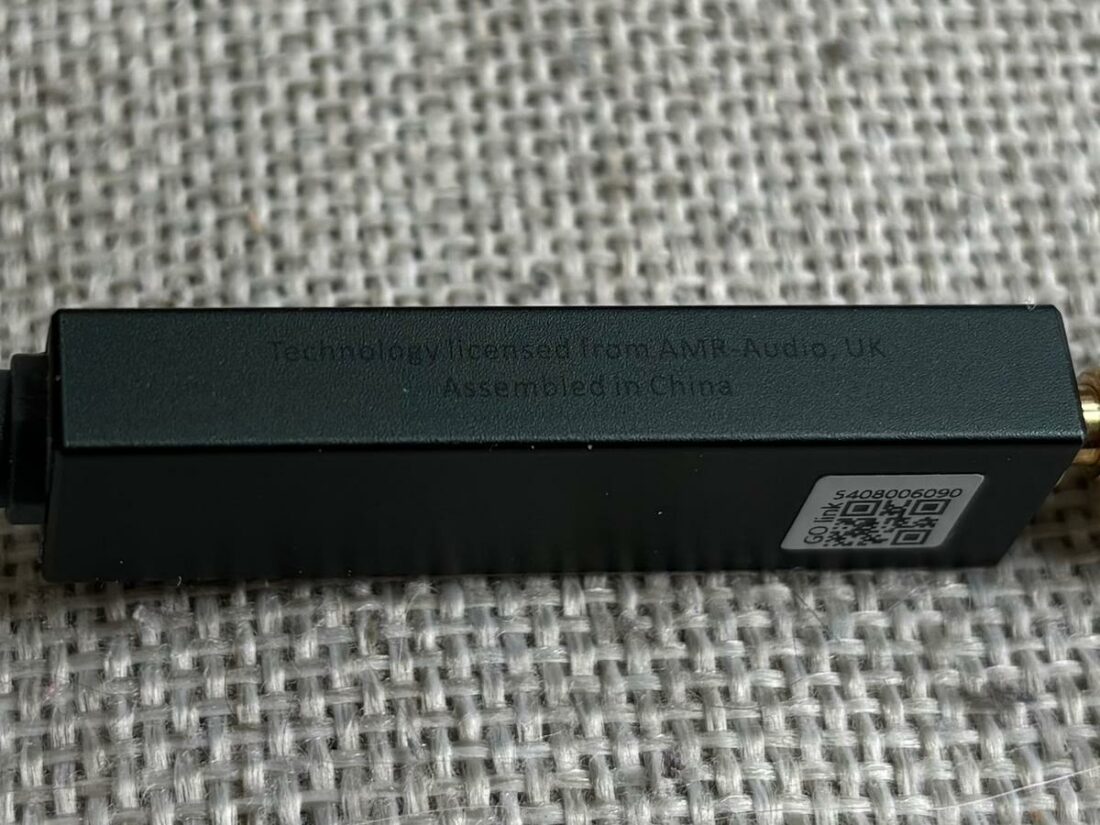
The GO link delivers a power output of 1.5V/70mW @32 ohms and 2.0V/14mW @600Ω which is sufficient for most moderately easy-to-drive headphones and IEMs. Clearly, this device is designed for portability, so, in my opinion, this is enough power for that purpose. Unsurprisingly, extremely current-hungry headphones, or IEMs, can be left wanting.
Changing the volume on the source adjusts the GO link volume level.
How Does the GO link Sound?
To be frank, I find comparing the sound quality of ESS-based dongles a tedious task of trying to decide if I’m only experiencing expectation bias or if there really is a sonic difference between them. Suffice to say, the differences are often quite subtle unless compared to something fundamentally different, like the R-2R based Cayin RU6.
The GO link is neutral and transparent, with no obvious coloration of the music. There is enough power to sound weighty and solid without an obvious loss of steam. Dynamics and extension are all I can expect from a device of this size.
The GO link is clean-sounding with a noise-free background.
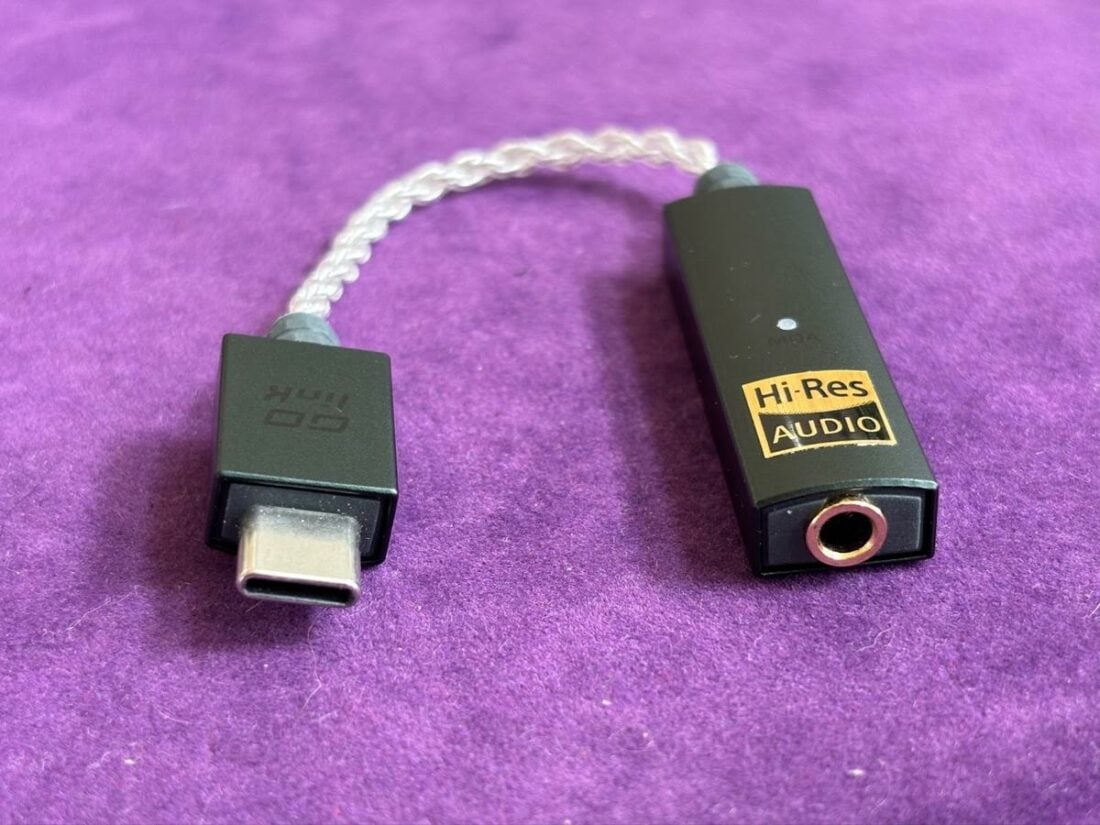
Depending on your listening source and file quality preferences, the GO link’s native decoding of 32-bit/384kHz, DSD256, and MQA can be a plus. Certainly, it supports the highest resolution audio recordings and presents them in all their glory. If low-res Spotify listening is your primary audio source, you’ll benefit less from this ability.
To my spoiled ears, what’s missing is the sense of polish or cohesiveness that I experience with a higher-end DAC/amp such as the Mojo 2. I find the listening experience somewhat more fatiguing over the long run with the GO link, although this is a general complaint I have with most dongle DAC/amps.
Comparisons
The lowly Apple dongle is the most obvious comparison for the iFi GO link. Priced sub-USD $10, the i-device sets a high baseline for affordable portable audio.
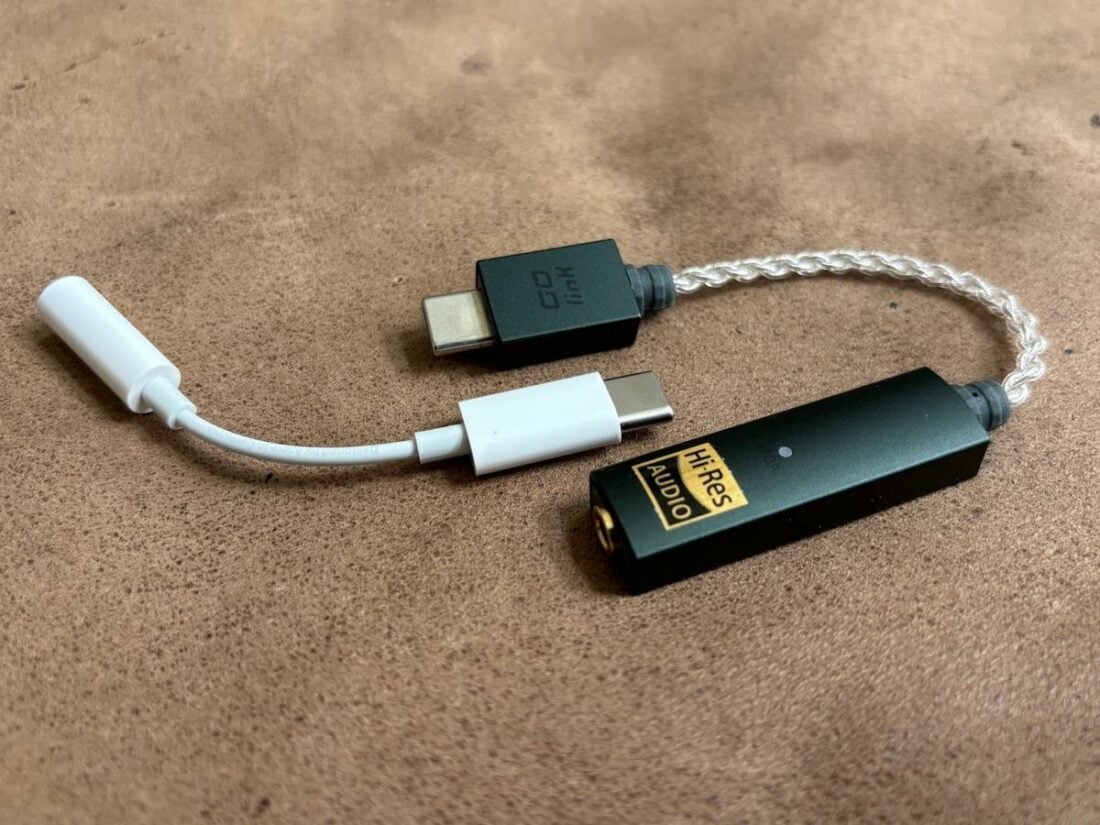
While better in many ways, including format handling and build quality, for me, the GO link just doesn’t offer 5+ times better sound quality. Especially on the go, where critical listening takes a second place to portability.
Gain is a bit higher than the USB-c Apple dongle, but technicalities, such as resolution, are essentially indistinguishable. Even with the high-end Thieaudio IEMs, I’m hard-pressed to tell them apart when volume matched.
Personally, it comes down to the fragility and cost of this sort of fixed cable device.
For the cost of the GO link, I can (and do) have a half dozen or so Apple dongles scattered amongst vehicles, bedside table drawers, desks, and jacket pockets. Breaking or losing an Apple dongle is no big deal, as one can be replaced for the cost of a fast-food burger.
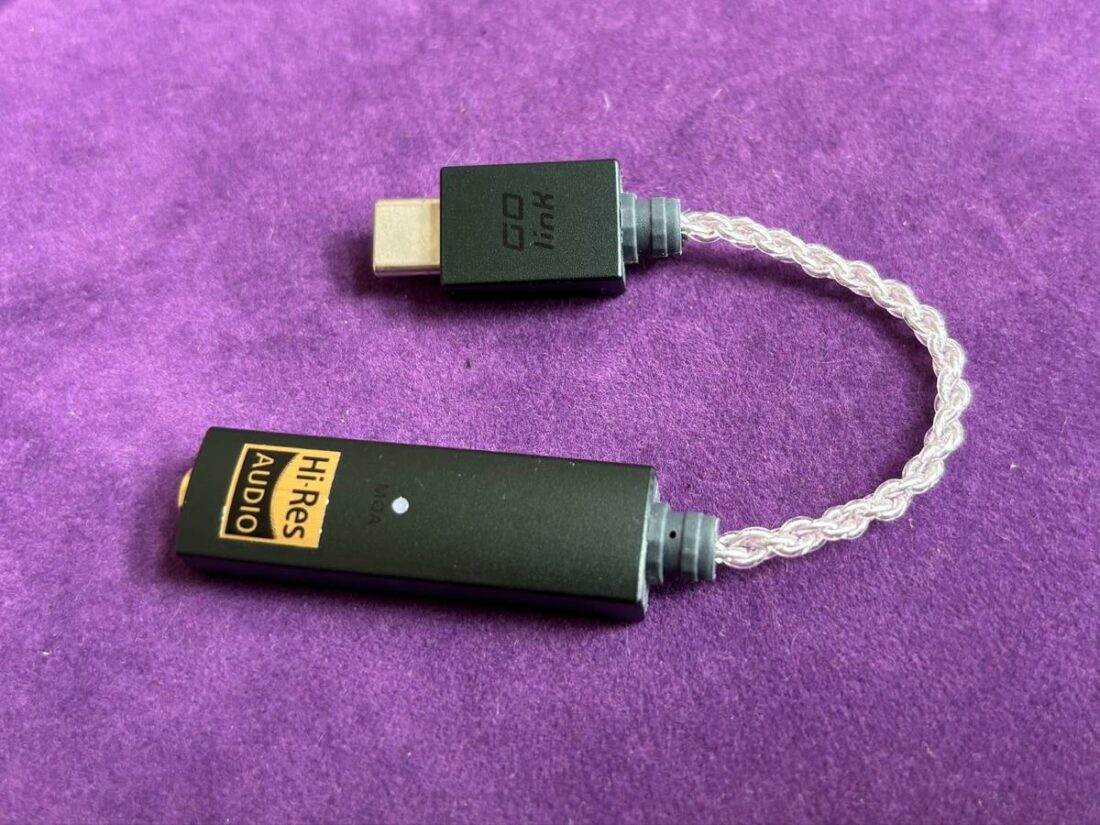
Where to Buy
Who Should Buy This?
Do you want a well-constructed, ultra-portable DAC/amp capable of higher-format and MQA decoding? Do you want in-the-box compatibility between Apple, Android, and PC? Are you a big fan of green? Well, have I got the product for you.
Final Thoughts
In many cases, factors beyond sound quality matter the most for dongles. How much does it cost? How does the size and shape impact portability? How much does it drain the source battery? Does it have enough output power to drive all the headphones and IEMs in my collection?
The GO link decodes almost every digital audio format. Check. It is tiny and extremely portable. Check. It’s well made. Check. The source battery drain is fairly minimal. Check. The power output is sufficient for most IEMs and portable headphones. Check. It includes adapters to make it plug-and-play compatible with lightning, USB-c, and USB-a. Check.
However, I struggle with the value proposition when comparing the GO link to the ultra-affordable Apple dongle.
Unquestionably, the GO link sounds pretty great for its size. But the sonic improvements are subtle over the i-dongle. It’s a tough niche to carve out. Critical listeners will want to spend more for a less portable, better-sounding device. I think those more concerned with ultra-portability are likely to place greater importance on the low cost of the Apple dongle.
Listeners who want high-resolution and MQA decoding in the smallest portable package will find the GO link a perfect fit. But it turns out that isn’t me. My priorities aren’t everyone’s, of course, so the iFi GO link may perfectly suit your needs.
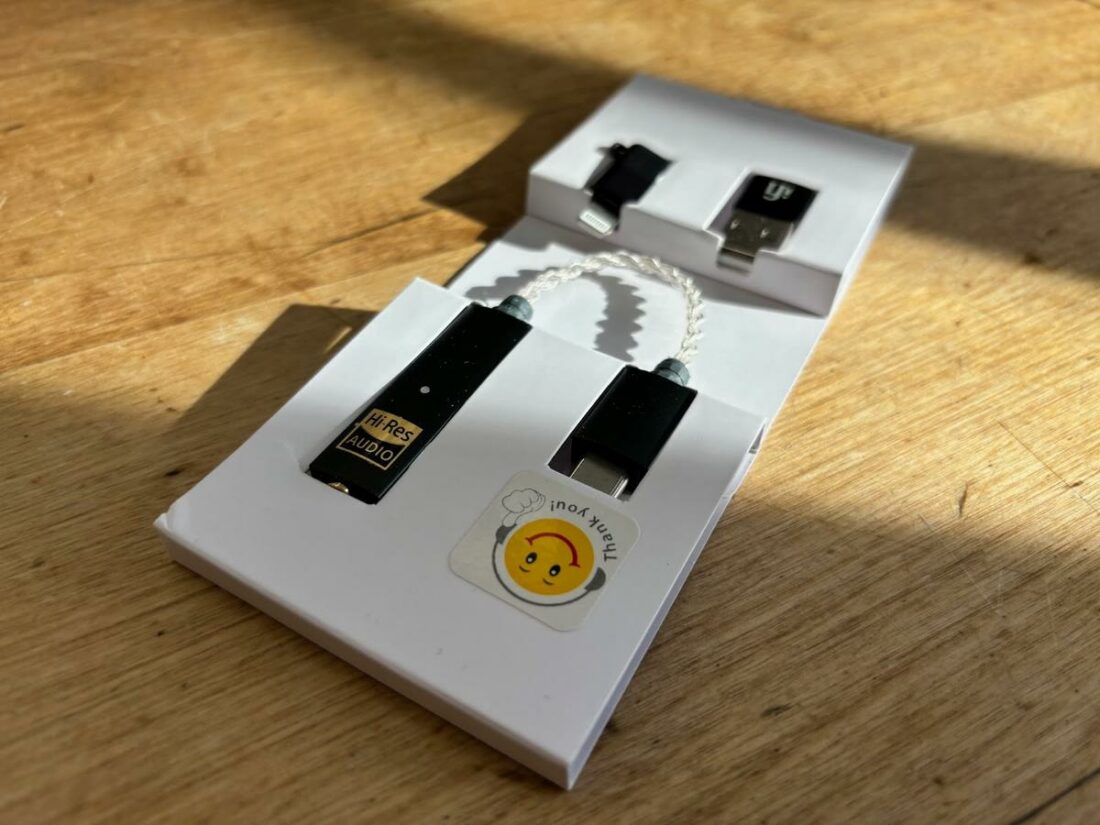
What’s in the Box?
- iFi GO link
- USB-c to USB-a adapter
- USB-c to Lightning adapter
- Quick start card
- Warranty guide
- iFi decal
Technical Specifications
- Form:, Portable, DAC, amp
- DAC Chipset: ES9219MQ/Q
- Format support: 32-Bit/384kHz; Full Native DSD256; MQA
- OS support: Android, iOS, Windows, Apple Mac
- Format LED: Magenta, Green, Yellow, Cyan, Blue
- Output power: ≥1.5V/70mW @32Ω; 2V/14mW @300Ω
- DNR: ≥122dB
- SNR: ≥125dB
- Impedance (Ohm): <0.4Ω
- Frequency Response (Hz): 10Hz – 80kHz (-0.5dB)
- THD+N: ≤0.004% (1.27V @ 32Ω)
- Removable Cable: N
- Cable Type: 60mm, braided
- Source: USB-c
- Output: 3.5mm, S-Balanced
- Mic: N
- Case Material: Magnesium alloy
- Weight (g): 11g
- Size: 135×12.6×7.6 mm
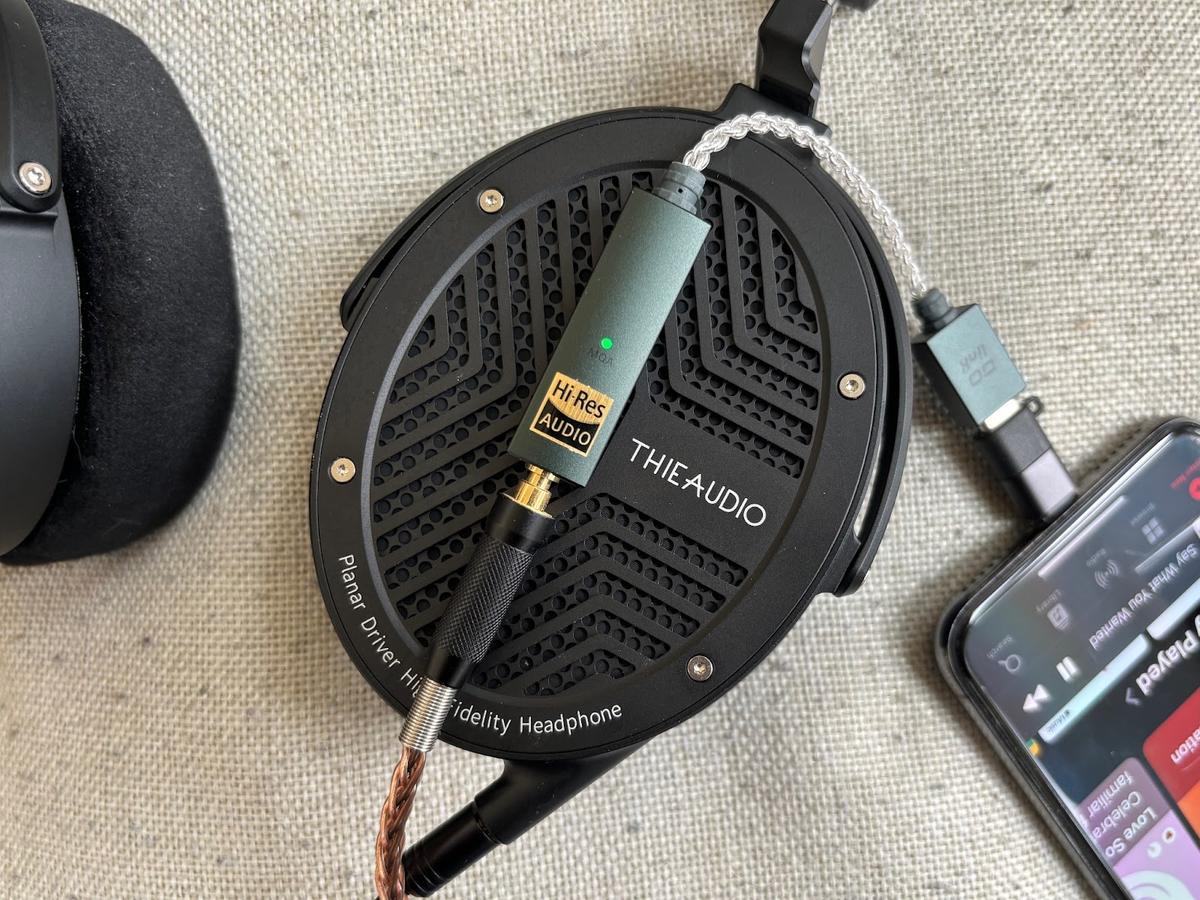
With all due respect, the last paragraph unveils/explains the limits of this review. Someone else should have reviewed this device -someone for whom it is designed. It would have improved the “value proposition” of time spent reading this piece for someone who actually is likely to appreciate the features.
Not every device is a great fit for every person. That’s why it’s good to read reviews from lots of folks with different perspectives. Just cause this one isn’t really for me, doesn’t mean that what I describe in the review is invalid. If you’ve got one and you like it, awesome! It’s a good fit for you. It’s got lots of good points, that I hopefully fully cover in the review. Take it for what it is, just one person’s opinion.